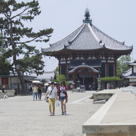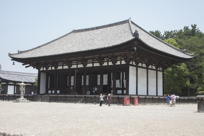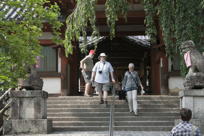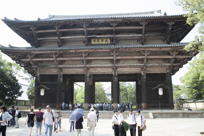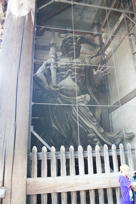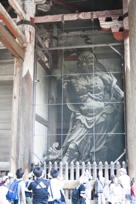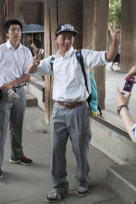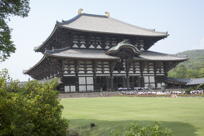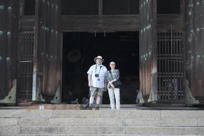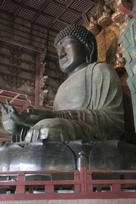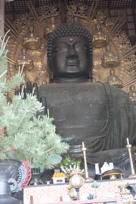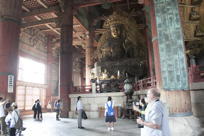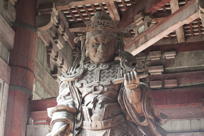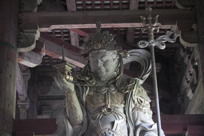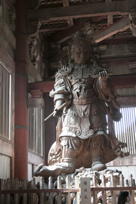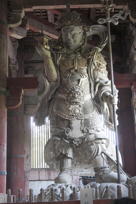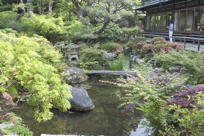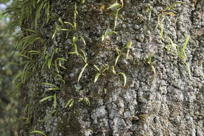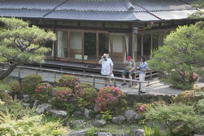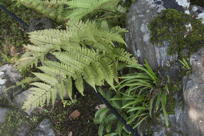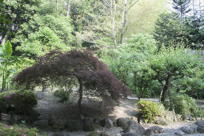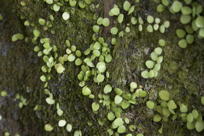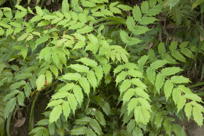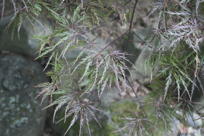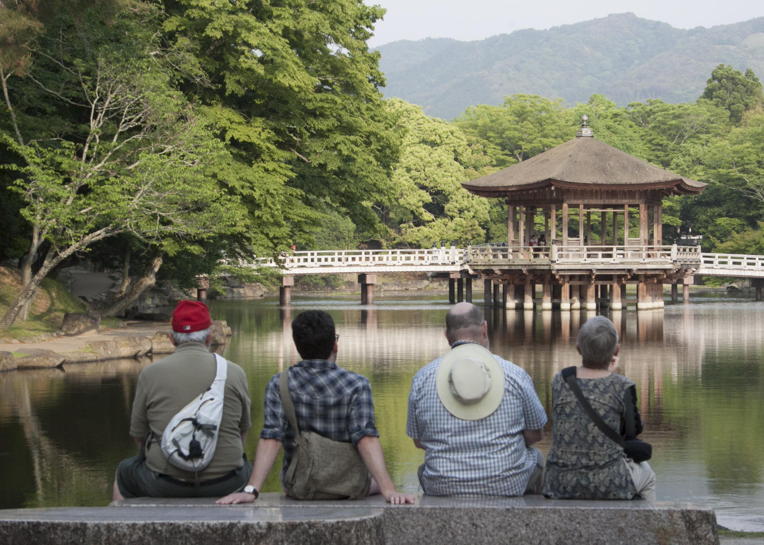
|
| Almost the last picture I took this day, everybody rests after the excitement (bigger image). |
Friday, 30 May ( II ), in Nara !
Once in Nara, we started taking pictures like crazy. In Nara alone, I took 212 shots with my camera, so this page will be a lot longer then the previous one, even with a lot of culling of duplicate or uninteresting pictures.
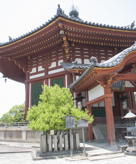
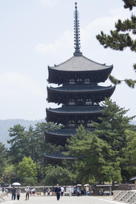
Our first stop was the Kōfuku-ji temple, a very old establishment. First picture (left) is of the Nan’en-do, the South Octagonal Hall, just a partial shot, but you can get a distant view of the same on the right here. From here, we walked towards the Five-Story Pagoda, which you see in the lower picture to the left. The third important building in Kōfuku-ji is the Tōkon-do, the East Golden Hall—there’s a Central Golden Hall as well, but it was encased in a protective structure during reconstruction, so we didn’t get a look at that.
And then we came to The Deer. They are Cervus nippon, known as Sika Deer, sometimes Japanese Spotted Deer, though they occur throughout East Asia, but are common only in Japan. Here in Nara, they’re completely tame, because they have Status, namely they are officially National Treasure. (No venison please.) Below are a stop-frame sequence, and two iPhone movies of the deer.
| Thirteen-second stop-frame sequence of a Sika buck |
|
The lady feeding the deer in front of her is
molested by one behind her (21 seconds). |
How tame can a wild animal get, anyway? (22 seconds) |
After our visit with the deer, we went looking for lunch, since it was about noon, and our breakfast had been early. We found a restaurant with a French name, and stopped there for sangría and (for Mark and me) curry with rice.
Our next objective was the National Museum, where we could take no photographs. My journal says that we saw lots of bronzes going back to the Heian period (before the establishment of the Shogunate), and I seem to recall some interesting ceramics from the Jōmon (i.e. prehistoric) period as well (but that memory may come from the Tōkyō museum we visited the next day). We spent a lot of time there, but since we were museumed out, we skipped the half of the museum that was devoted to paintings. Instead we went on, to the:
Daibutsuden. If you recall, “Daibutsu” means Great Buddha, as in Kamakura. Here, the statue is protected, within a building, and it seemed less impressive to me for that reason. Nonetheless, we all took loads of pictures. The whole complex where this Buddha resides is known as Tōdai-ji.
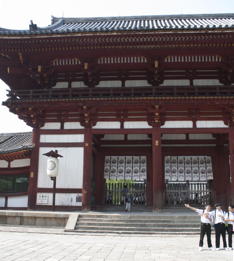
You recall the gate in Asakusa that had gods for Thunder and Wind (or vice versa) as guardians, one on each side. Same thing here, but they’re unfortunately extremely dusty. What with the screening in front of them (presumably to keep the pigeons off), they’re very difficult as photographic subjects. There they are, the first two pictures in the lower row to the right. And to show that there are photographic subjects that are not difficult, I’ve included the third snapshot, where one of the boys is making the Japanese sign for “you’re taking my picture”—you see his friend’s cell-phone to the extreme right of the frame.
I can’t figure out which building that is over to the left. Maybe the innermost gate? You see banners hanging within.
But there’s no doubt what that is in the picture below: it’s the building housing the Great Buddha — and many other large statues, as you’ll see below. Meanwhile, though, I also got a picture of this huge building a little bit from the side. You can still see the crowds making their way towards it. And in the second picture to the right, there are the Kings, standing in the doorway like tourists.
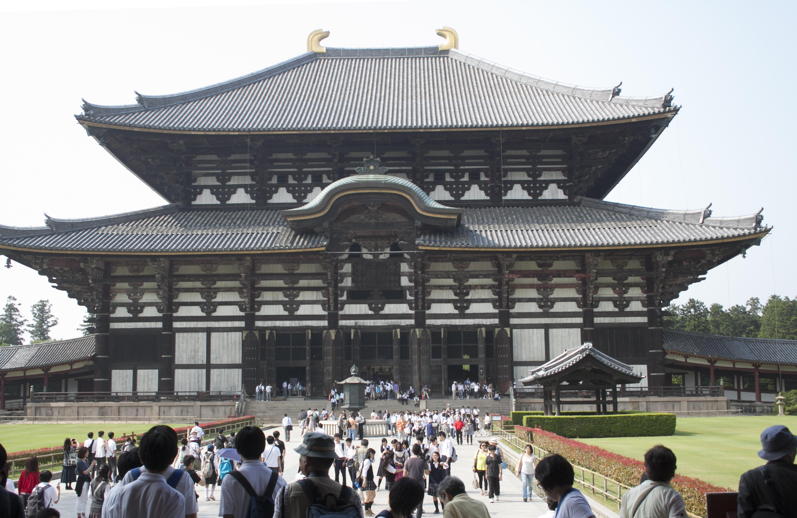
|
| The crowds approach the Hall of the Great Buddha, Daibutsu-den (larger image). |
And there were crowds. Everywhere. We got inside and took loads of pictures, of the Great Buddha, of every other huge statue.
The Buddha himself had a lot of votive stuff in front of him, so the top picture in the left column shows him better than the straight-on one below it. In the middle column, I think that’s Kannon up top: if you go around to the left of Buddha, you’ll see this statue behind him. Then there are the two huge statues of guardians, Komokuten and Bishamonten. They’re two of the four guardian kings in heaven, according to Buddhist wisdom. To tell the truth, I find them much more interesting than the purely benign Buddha and Kannon.
From there, we went to a nice garden where both Mark and I found all sorts of interesting things. But in the shapshots to the right, we get nice gardens on the top row, with Mr. K snapping me in the middle.
Second row, I think the left picture shows ferns. Definitely ferns in the middle, even the spears in lower right there: you can see the characteristic spore-making dots on some of them. And I suspect that the right-hand picture is of ferns, too.
Bottom row looks like Mahonia to me on the left, and it’s certainly a highly-bred variety of Japanese maple (Acer palmatum) on the right. This tree is planted everywhere in the States as an ornamental, but we saw it growing just as a forest tree here in Japan. I prefer the wild form to all the “improved” varieties, and there are hundreds of them.
After that, we went to the city park where we admired the gazebo that you see at the very top of this page, then found a restaurant. My journal says, «Went in search of beer, and by the time we got to a likely place, we decided to have dinner there. M and I had eel skewers (flesh was uncharacteristically soft, I was disappointed, and Mark complained that they weren’t smoky enough) and chicken, grilled after marinating in miso. The chicken tasted wonderful, but was very tough. Cindy exclaimed in delight over her meal, however. We had two rounds of draft beer and were definitely sated when we left.»
We picked up a local back to Kyōto just after eight o’clock, and we were all very tired. The train pulled into our station at nine-fifteen, and Mark and I went right to bed, but the Moorman-Kings went to try out Pachinko. Nothing would have gotten me to go there, with my anti-gambling mania, and it turned out that it was a disappointment to Mason, too.

|
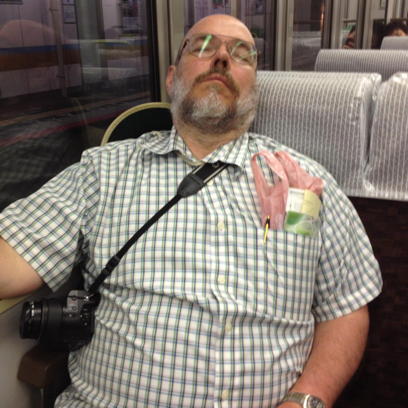
|
Tomorrow, it’s Tōkyō.
